Corte
Submitted by HedonisticHiking on 23 Jan 2024
The last stop on our The Island of Corsica tour is in the wonderful Restonica Gorge which, in addition to providing some glorious hiking, also gives us time to explore the pretty town of Corte, the former capital of Corsica. The town has a charming historic centre with several buildings and monuments that are well worth a visit.
Why visit Corte?
Set right in the mountainous centre of Corsica, the historic fortress town is the perfect springboard into the mountains and striking local scenery, but it also provides a fascinating glimpse into the history of the island. Back in the 18th century, it was the heart of the island’s cultural, political and social life. Today, in addition to its low-key tourism, it’s a major university town and an enviable gateway to outdoor activities.
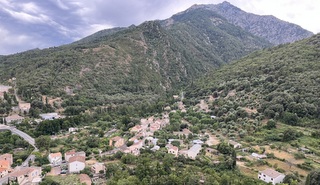
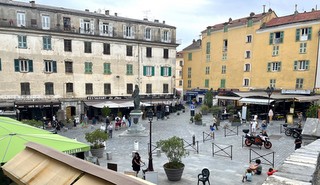
Another plus is the town’s climate. Temperatures hover from the low to high 20’s between May and October, with plenty of warm sunshine, and in August Corte and the surrounding Natural Park can provide a welcome break from the fiercer heat that characterises other parts of the island. During the winter months, the surrounding mountains are snow-covered and skiing is a popular activity during February.
Top things to see in Corte
Start exploring Corte in the main Place Paoli, fringed by bars and restaurants and home to a statue of Pasquale Paoli, the leader of Corsica’s resistance movement. From here, meander leisurely up the wide-stepped Rampe Sainte-Croix, lined with bars and restaurants and through the narrow cobbled streets up towards the historic centre and past the Fontaine des Quatre Canons.
The Place Gaffory has several of the town’s most interesting buildings and monuments, not least a statue of the patriot General Jean-Pierre Gaffory himself. After 20 years heading up the Corsican government (1730-1750), Gaffory was assassinated at the age of 49. His home, opposite the church, is still riddled with bullet holes said to date back to the 1750 battle for independence against the Genoese.
Close by, the small Chapel Sainte-Croix looks unassuming from the outside but has a pretty interior with wonderful 17th century paintings. And it’s at this point that you can identify the distinctive pink bell tower that is visible as you approach Corte as belonging to the 15th century Church of the Annunciation.
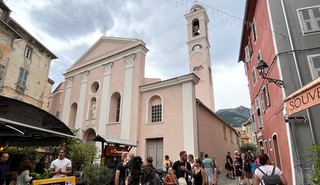
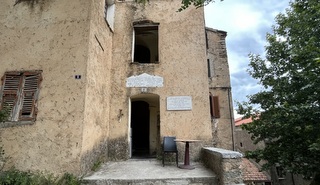
You’ll also wander past the Maison Arrighi de Casanova, a Corsican nobleman’s house, where Napoleon Bonaparte’s parents lived for several years. In fact, it was here that Napoleon’s brother Joseph, the future King of Spain, was born in 1768.
Continue uphill until you reach the Citadel and the Musée de la Corse, housed in the modernised 19th century barracks. Although the Citadel is perched on a large rocky promontory in the centre of town, the best views of it are from the Belvedere viewing platform. From here, you get extensive views over the rooftops of Corte and across the river valleys and mountains.
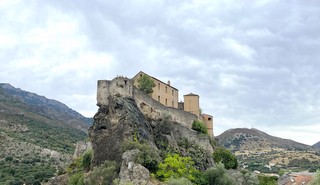
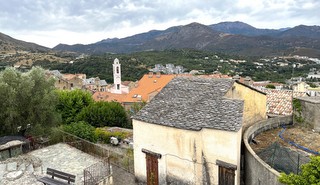
Hiking and outdoor activities around Corte
Set amidst mountains and rivers in the heart of the Corsica Regional Nature Park, the surrounding area is a natural playground for outdoor enthusiasts. The Belvedere is a starting point for a steep 2km footpath, the Sentier du Patrimoine, which leads down to the Tavignanu River, over the town’s old bridge and back to the centre of town.
Alternatively, hike along the medieval mule track that winds through Corsica’s deepest gorge, the Gorges du Tavignanu, as far as the Arche de Padule. There are also walks to the glacial lakes Melo and Capitello in the upper valley of the Restonica river, and trails through beech and Laricio pine in the Forest de Vizzavona.
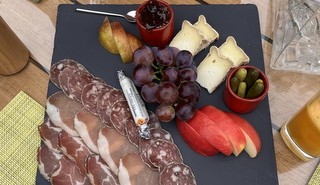
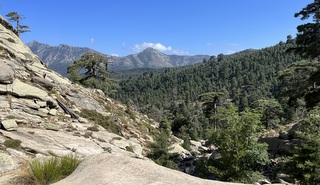
What to eat and drink in Corte
Whilst the island’s gastronomy combines the best of French and Italian food, food in this mountainous region of central Corsica is steeped in tradition. Cured meats, soups and stews, and sheep and goats’ milk cheese are typical. ‘Brocciu’, similar to ricotta, appears in numerous recipes as do salami and cold cuts made from free-range pigs fed on a foraged diet of chestnuts and acorns. And if you want to take a little taste of Corsica home with you, the local fig jam is a must!
If you need inspiration for take home gifts, Ghionga at 9 Rue du Vieux Marche in the Old Town is said to be one of Europe’s oldest grocery shops, dating back to 1769.
Where to stay in Corte
The town has a good selection of hotels, in the centre and on the outskirts, catering for all budgets. We spend the last 3 nights of The Island of Corsica tour at the very lovely Hotel Dominique Colonna, starting each day with a mouthwatering breakfast on the tranquil terrace, overlooking the Restonica Gorge.
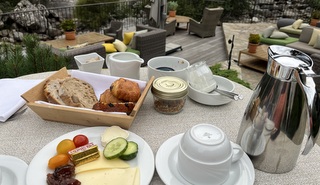
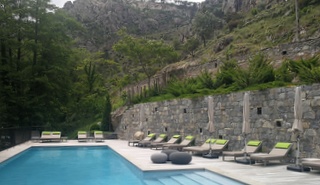
Transport and travel connections around Corte
If you’re exploring Corte and the Haute Corse region independently, one way to visit Corte is by car. There are plenty of parking spaces in town in addition to a large covered car park (Parking Tuffelli). However, U Trinicellu (Little Train, as locals affectionately call it) – is a rail network linking three coastal cities on the island's west (Ajaccio), north-west (Calvi) and north-east coasts (Bastia) with Corte, and many smaller towns in between. With a one-week pass covering train travel anywhere in Corsica for just €50, you don't necessarily need to hire a car to explore. The fantastic routes take you through mountain valleys, up to remote hilltops and all the way to the sea. Bastia, Ajaccio and Calvi, each have their own airport.